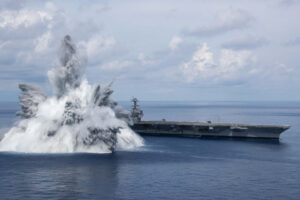
The latest report from the Pentagon’s top weapons tester doubts the newest aircraft carrier, the USS Gerald R. Ford (CVN-78), can meet its sortie generation rate (SGR) requirement and achieve a self-defense requirement, but a Navy official recently said the goals are achievable. “CVN-78 is unlikely to achieve its SGR requirement. The target SGR threshold is well above achieved historical rates and based on unrealistic assumptions, including fair weather and unlimited visibility, along with the expectation that aircraft emergencies, failures…

 By
By 











